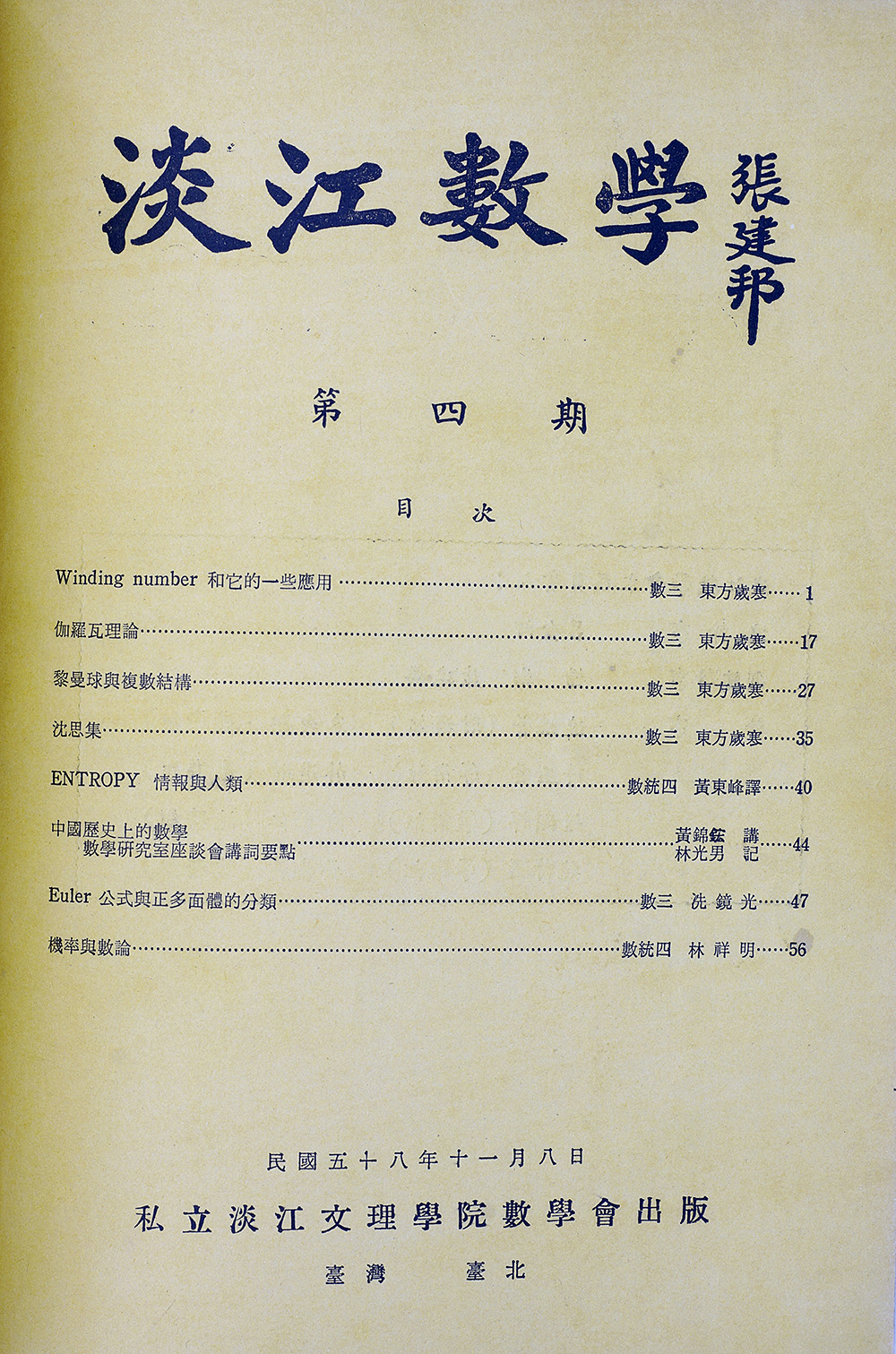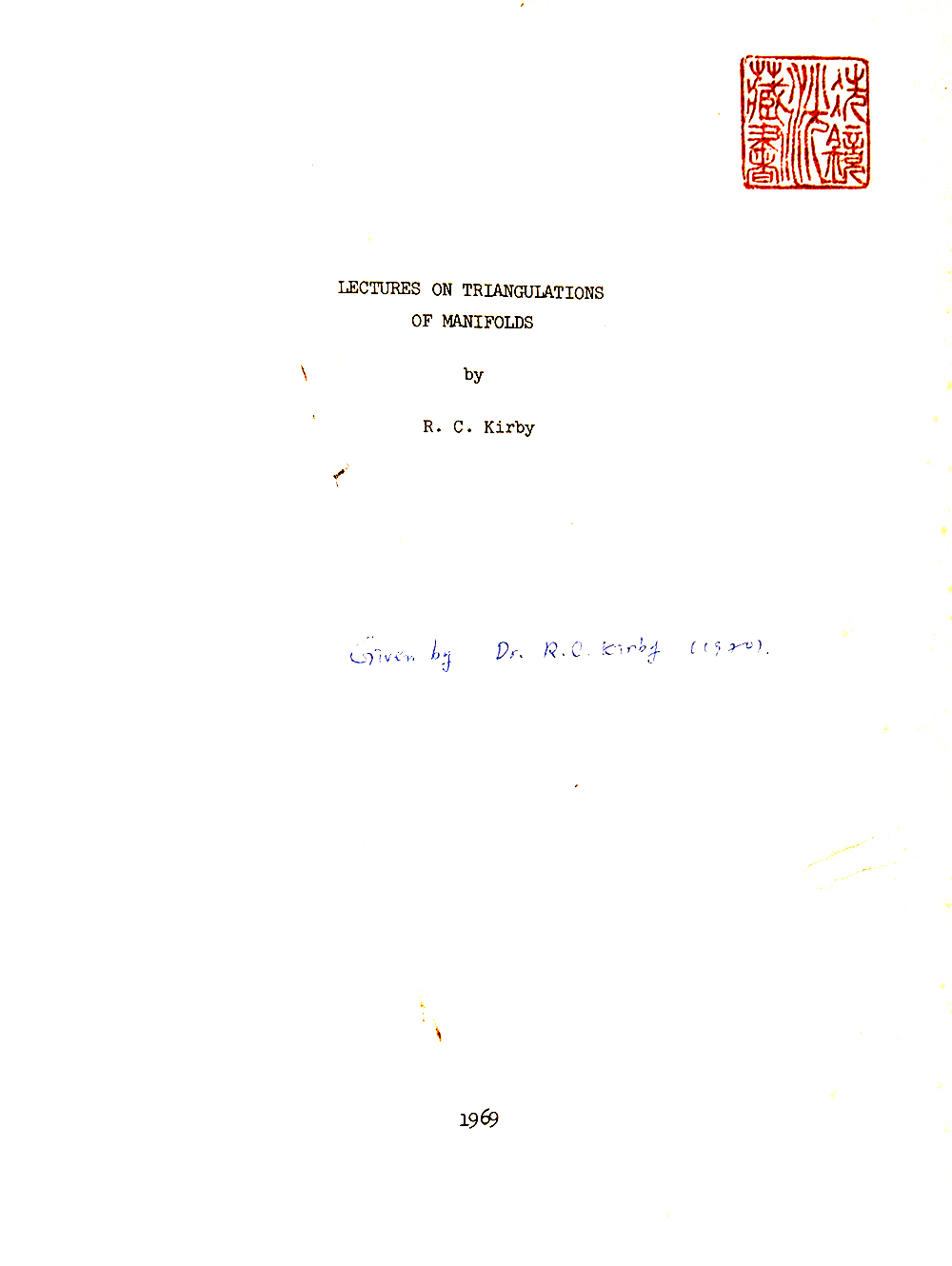Characterizations of the \( \sin() \) and \( \cos() \) Functions
Ching-Kuang Shene (冼鏡光), Professor Emeritus
Department of Computer Science
Michigan Technological University
Houghton, MI 49931
USA
Created October 5, 2025
![]()
Ching-Kuang Shene (冼鏡光), Professor Emeritus
Department of Computer Science
Michigan Technological University
Houghton, MI 49931
USA
Created October 5, 2025
![]()
When I was in college, a professor introduced Artin's The Gamma Function to me. I did read it thoroughly. This is a very interesting booklet of 48 pages and rather easy to read. Then, the professor asked me a question: Can you characterize the \( \sin() \) and \( \cos() \) functions just like Artin did to the Gamma function in his book? I accepted the challenge and finished this homework soon. It was published in the (annual) journal of the Math Department for students in 1969. The left image below shows the text of that note and the right one is the cover of that issue. What the last few lines said is simple: using ordinary differential equations the characterization conditions are: given two differentiable functions \( f \) and \( g \), if they satisfy \( f^{\prime} = g \) and \( g^{\prime} = f \) with initial conditions \( f(0)=0 \) and \( g(0) = 1 \), then \( f = \sin() \) and \( g = \cos() \). This was an easy homework and every students in math can do after taking an ODE course.

|

|
From \( f^{\prime} = g \), we have \( f^{\prime\prime} = g^{\prime} = -f \) and hence \( f^{\prime\prime} + f = 0 \). Similarly, we also have \( g^{\prime\prime} + g = 0 \). Both are second order linear ordinary differential equations and have the following solutions, where \( A \), \( B \), \( C \) and \( D \) are constants: $$ \begin{eqnarray*} f(x) &=& A\cos(x) + B\sin(x) \\ g(x) &=& C\cos(x) + D\sin(x) \end{eqnarray*} $$ Note that finding the above solutions is independent of the Pythagorean Theorem and the Pythagorean Identity. Please refer to any ODE textbooks for the ways of solving a second order linear differential equation.
Consider the initial condition \( f(0) = 0 \). Plugging it into the solution for \( f(x) \) gives \[ 0 = f(0) = A\cos(0) + B\sin(0) = A\cdot 1 + B\cdot 0 = A \] Thus, \( f(x) = B\sin(x) \) holods. Then, we have \( 1 = g(0) = f^{\prime}(0) = (B\sin(x))^{\prime}_{x=0} = B\cos(0) = B \). As a result, we have our final result \( f(x) = \sin(x) \). The same technique yields \( g(x) = \cos(x) \).
Then, the professor gave me another challenging question: Can you do the same WITHOUT using ODE? He said he did not know exactly the answer, but he did realize that some other conditions may be needed. Very soon I came up with the answer with additional conditions. My solution was clumsy, ungainy and long. No, I did not use the ODE theory; however I did use a theorem from general topology or real analysis as I was taking at least one of the two mentioned courses at that time. The above mentioned article was about this clumy and ungainy solution rather than the ODE based solution. Additionally, in a Lemma in that article, the result in \( 𝑓(𝑥) =\sin^2(𝑥) +\cos^2(𝑥) \) Is a Constant Function was stated and proved.
I was not pround of that solution because I was focused on Milnor's exotic spheres and the Kirby-Siebenmann solution to the triangulations and Hauptvermutung theory. I'd like to take this chance to express my deep appreciation to Prof. Robion Kirby's generosity of sending me his lecture notes on triangulations and Hauptvermutung of manifolds. I made a very modest request to Prof. Kirby for his 1969 UCLA lecture notes and received it very shortly. I hope I would have time to provide you with a scanned PDF copy when I have time to scan the 100+ page notes, appendices included.

|
Go back to Home Page.